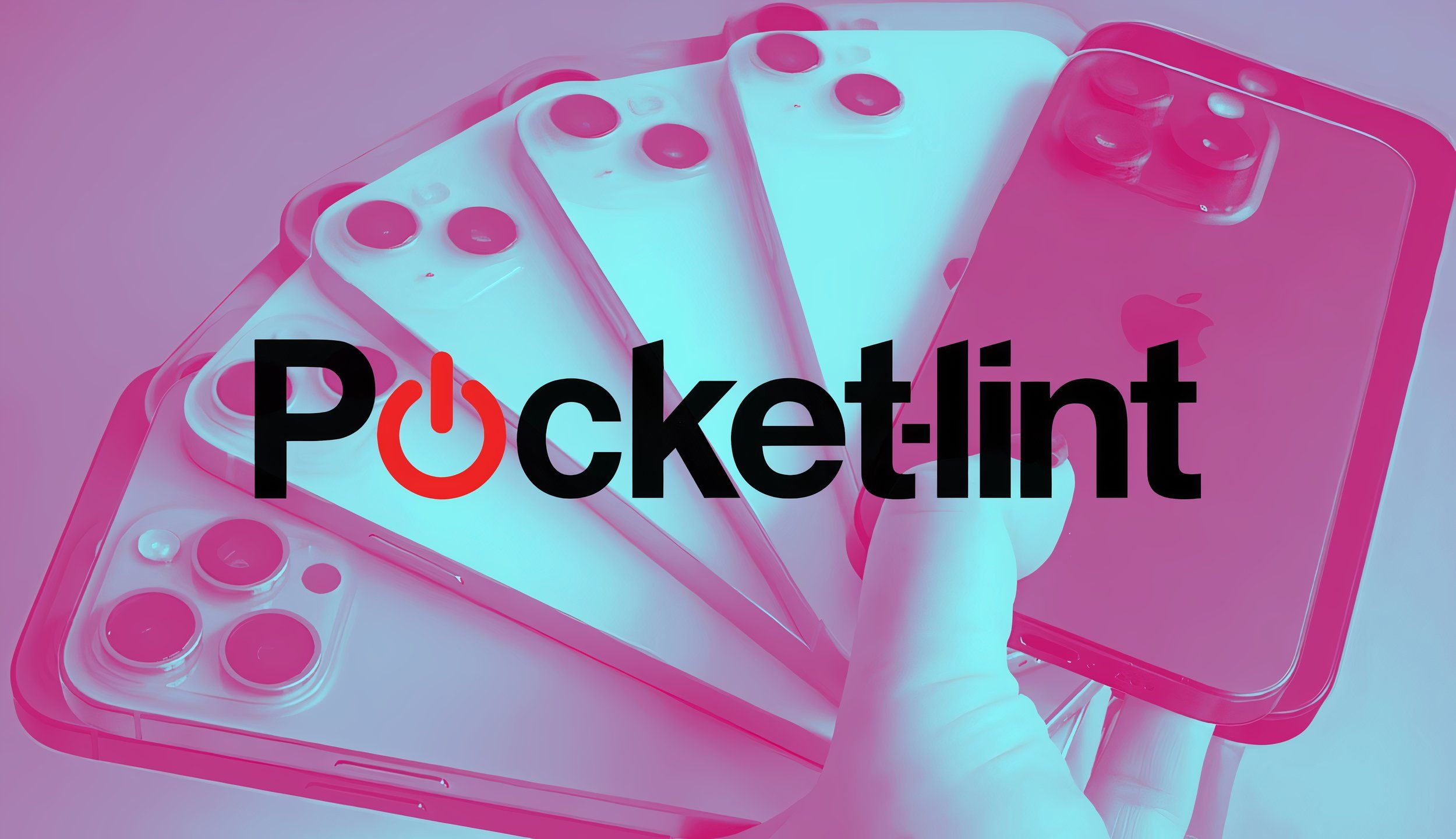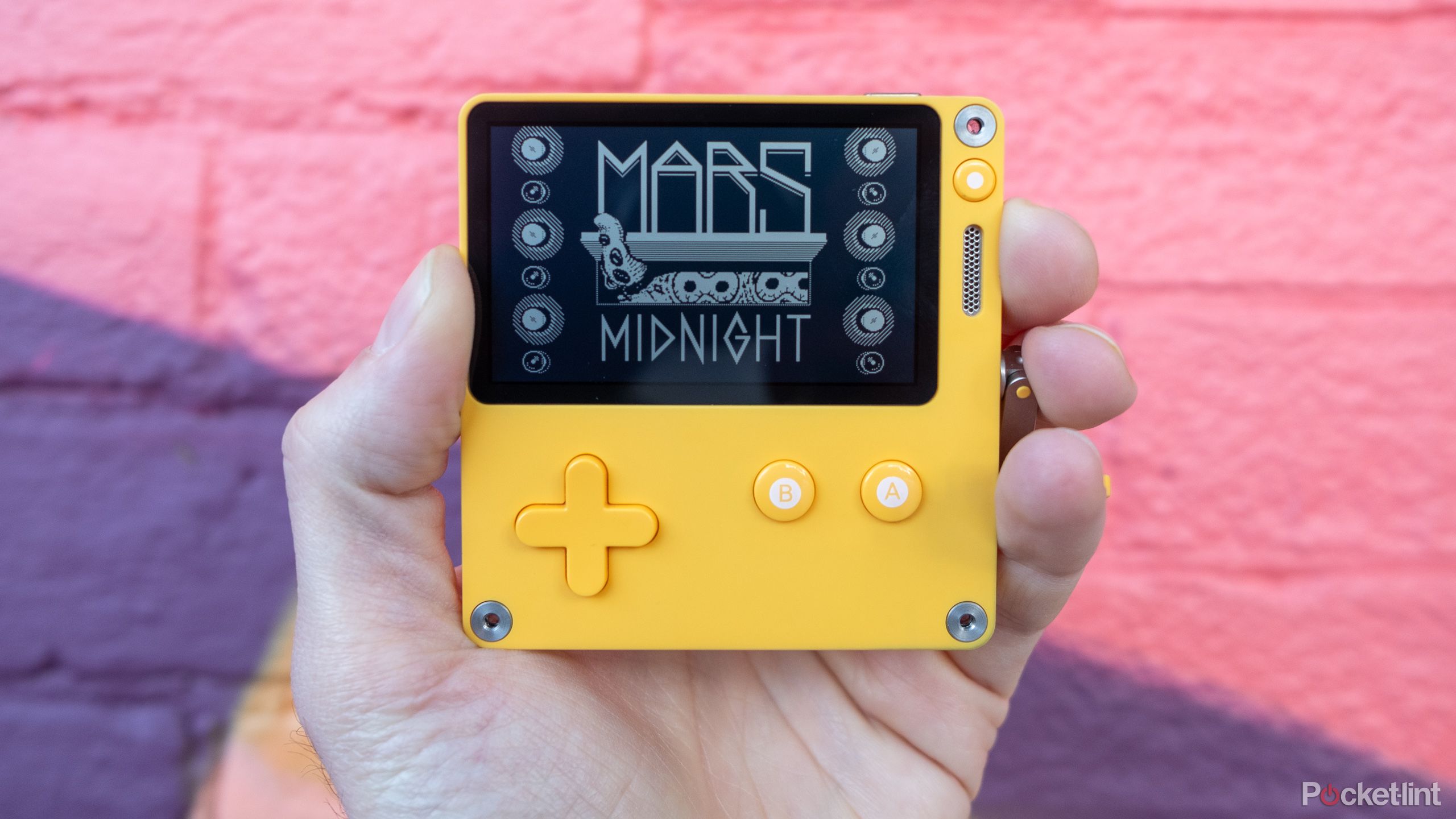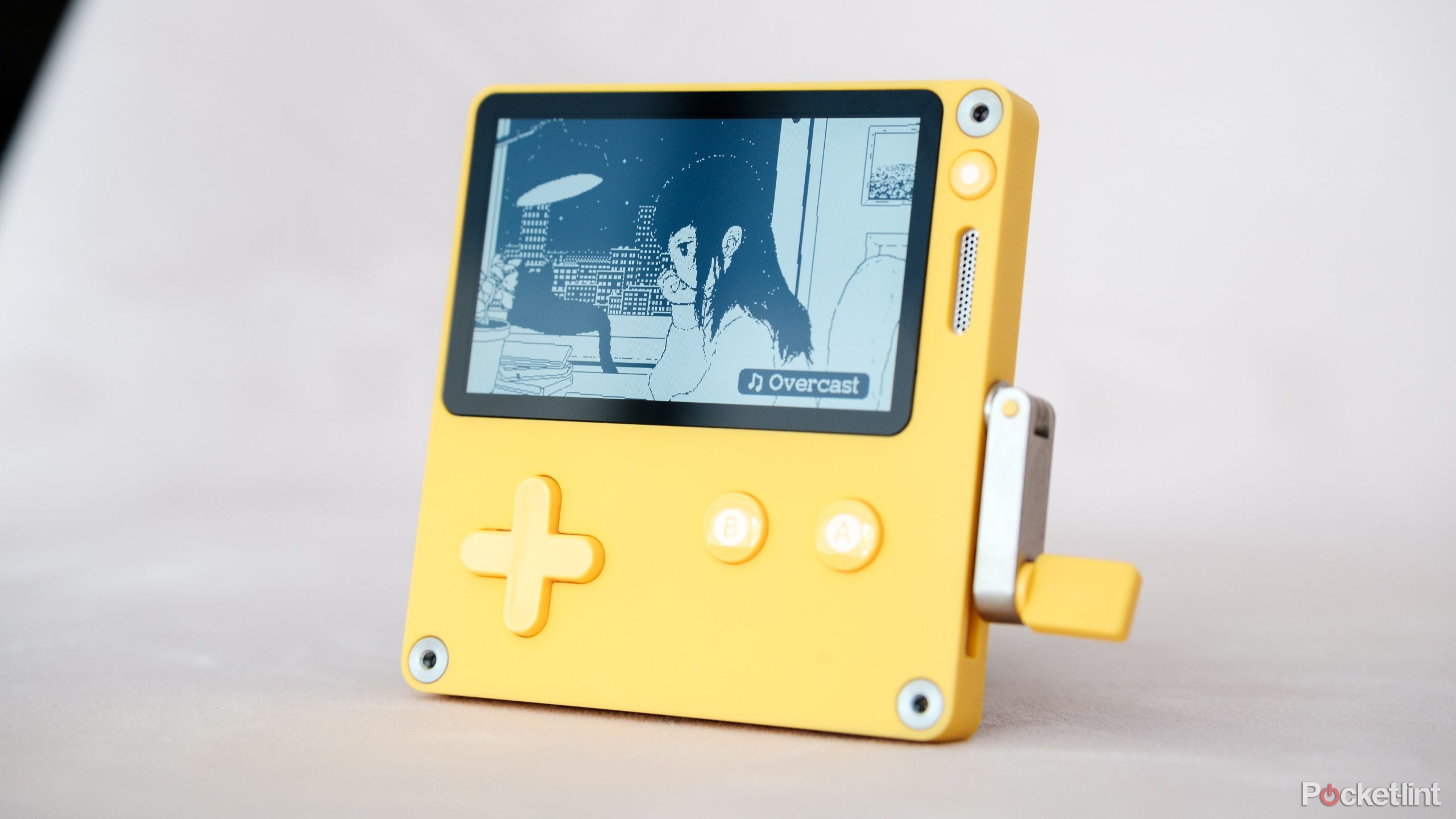Key Takeaways
- The Playdate features a fun design and an unique library of games.
- The screen demands some compromises and the price could be more affordable.
- However, there’s almost nothing else like it out there.
A little more than two years after it arrived during the height of the pandemic, the Playdate is available to buy without waiting months for your order to ship, making now the perfect time to revisit this adorable little console. After all the delays and hype, is the Playdate worth buying in 2024? It turns out the answer is surprisingly straightforward.

Playdate
Recommended
The Playdate is a delightful and charming handheld with a unique library of games, including 24 titles that come free with the system. Outside of a LCD screen that can be dim and hard to see in some situations, there’s little to complain about the hardware other than the $200 price tag.
- Fun and cute design
- Easy to pocket
- Unique library of games found nowhere else

How we test and review products at Pocket-lint
We don’t do arm-chair research. We buy and test our own products, and we only publish buyer’s guides with products we’ve actually reviewed.
Specs, pricing, and availability
The Playdate is available to buy directly from Panic, the creator of the console, for $199. After recently fulfilling all preorders, Panic is shipping new orders within two to three business days.
Playdate
- Dimensions
- 76 x 74 x 9mm
- Number of Games Included
- 24
- Brand
- Panic
- Chipset
- 168 MHz Cortex M7
- RAM
- 16MB
- Storage
- 4GB
- Wireless Connectivity
- 2.4GHz Wi-Fi, Bluetooth
- Display
- 400 x 200 1-bit ‘Memory’ LCD
- Ports
- USB-C, 3.5mm headphone jack
- Battery
- 8 hours of playtime, 14 days of standby
What I liked about the Playdate
Almost everything
The Playdate makes a great first impression, with an unboxing experience that’s charming and thoughtful. The handheld arrives in bright yellow box that makes ample use of foam to keep your new system safe in transit. “Have fun!” declares an insert that holds the included USB-C charging cable together. As for the Playdate itself, it’s beautifully made. Panic recruited Teenage Engineering, best known for synths like the OP-1, to assist with the creation of the device, and it shows.
The Playdate has all the usual design flourishes you’ll find on other TE products. All the inputs, including its signature crank, feel solid and are satisfying to press and use. The exterior of the handheld is made from high-quality plastic that doesn’t collect fingerprints, and I love details like the see-through screws. Best of all, the entire thing can fit in a jean pocket.
When you unlock it for the first time, Playdate greets you with a charming animation that runs through all the controls. The interface isn’t overly complicated, but every bit of it has been infused with polish and whimsy. No surprise there; before releasing the Playdate in 2022, Panic was best known for developing Mac software and publishing games like Firewatch.
If you know little to nothing about the Playdate, here’s the best part: Each one comes with a complimentary set of 24 games. Those titles, part of Playdate’s Season 1 of free games, don’t unlock all at once. Instead, they’re delivered to you twice per week for 12 weeks straight. Not all the games are equally good, but some are among the best on the system.
The Playdate makes a great first impression, with an unboxing experience that’s charming and thoughtful.
Before writing more about the Playdate’s library, I want to spend a few more moments talking about its hardware because I think it’s important context for understanding what this console can and can’t do and, subsequently, who will get the most out of it.
The Playdate features a 168MHz Cortex M7 processor and 16MB of RAM. To put those specs in perspective, even the Nintendo Switch, now seven years old, is far more powerful. That said, a more useful comparison is the most obvious one. That is, the Playdate is about 40 times more powerful than the original Game Boy.
Yes, the resulting games are “lo-fi,” monochromatic, and often a lot simpler than what you’ll find on other platforms. But at their best, they’re delightful. One of my favorites, Grand Tour Legends, I bought from Playdate’s Catalog store for $6. It’s a great showcase for what’s possible on this hardware with a bit of creativity.
It’s a cycling game where you only need to worry about your rider’s pedaling cadence. Turn the Playdate’s crank faster, and your rider will pedal harder. Of course, they’ll tire faster, too. So, the fun of the games comes from mastering the three available tracks and knowing when to push your rider to pedal hard and when to coast on a downhill. It captures the essence of cycling like no other game I’ve played before, and it looks incredible in motion.
Grand Tour Legends is also only one of the highlights I’ve had a chance to play during my short time with the Playdate. Other standouts include Whitewater Wipeout, Casual Birder, and Bloom. The first two are Season 1 freebies, while the latter costs $10 through Playdate’s Catalog store. However, my favorite so far is Mars After Midnight, the latest game from Lucas Pope, the creator of Papers Please and The Return of the Obra Dinn. Outside of the Catalog store. It’s also possible to sideload both free and paid games from itch.io, a process that Panic makes easy and straightforward.
Yes, the resulting games are “lo-fi,” monochromatic, and often a lot simpler than what you’ll find on other platforms, but at their best, they’re delightful.
When Panic first started shipping Playdate units in 2022, one of the open questions many had was whether the console would have a life beyond its initial 24 games. The answer, I think we can all safely say now, is that this small handheld has a far brighter future than anyone could have imagined.
According to a post Panic published on May 2, celebrating the one-year anniversary of the Catalog store, the company has sold more than 150,000 games through the marketplace, allowing it to pay out $544,290 to indie developers after accounting for processing fees, taxes, and a 25 percent cut of sales. Between Catalog and itch.io, the Playdate’s library is close to 1,000 games strong. Not bad for a console that doesn’t have the backing of Nintendo, Sony, or Microsoft.
What I didn’t like about the Playdate
The screen demands some compromises
If you’ve seen videos of the Playdate on YouTube or TikTok, then you probably know its screen is divisive. Panic didn’t go with a traditional LCD panel; instead, the company sourced a ‘Memory’ LCD from Sharp. The technology offers a few advantages over the LCDs most of us use every day, particularly when it comes to the console’s 1-bit presentation.
Visually, the screen looks like an E Ink display. In motion, it’s a different story, with the panel offering a fast and fluid refresh rate. There’s no pixel smearing or input lag to speak of.
The Playdate’s screen also offers excellent viewing angles. It’s possible to see the screen clearly without looking at it directly. Power consumption is another advantage of Memory LCDs, with Panic promising eight hours of continuous playtime on a single battery charge. It’s also possible to get up to 14 days of battery life if you leave the Playdate in standby, in which case the screen will act as a nifty-looking digital or analog clock.
There’s just one issue with the Playdate’s screen: it’s not backlit. To get an image that wasn’t dull, I found I often had to sit next to one of the windows in my apartment.
There’s just one issue with the Playdate’s screen: It’s not backlit. To get an image that wasn’t dull, I found I often had to sit next to one of the windows in my apartment. As a result, I often battled glare. It’s not a deal-breaker, but it does make the Playdate less than ideal for evening gaming sessions.
There are a couple of other minor annoyances. The Playdate’s 2.4GHz Wi-Fi chip isn’t particularly fast, so downloads can be slow. Thankfully, with 4GB of storage built-in and most games taking up no more than 70MB of space in my experience, there’s no need to download any game more than once. Lastly, the console features a Bluetooth radio, but Panic has yet to release a software update to enable the feature, so wireless headphones are off the table.
 Should you buy the Playdate?
Should you buy the Playdate?
The answer is an easy yes. At $200, the Playdate might feel overpriced, especially when you consider it’s possible to buy a Switch Lite for about the same amount of money. However, between its fun design and growing library of delightful games, the Playdate has a lot to offer for those looking for something a bit different from their portable gaming console.

Playdate
Recommended
Trending Products

Cooler Master MasterBox Q300L Micro-ATX Tower with Magnetic Design Dust Filter, Transparent Acrylic Side Panel…

ASUS TUF Gaming GT301 ZAKU II Edition ATX mid-Tower Compact case with Tempered Glass Side Panel, Honeycomb Front Panel…

ASUS TUF Gaming GT501 Mid-Tower Computer Case for up to EATX Motherboards with USB 3.0 Front Panel Cases GT501/GRY/WITH…

be quiet! Pure Base 500DX Black, Mid Tower ATX case, ARGB, 3 pre-installed Pure Wings 2, BGW37, tempered glass window

ASUS ROG Strix Helios GX601 White Edition RGB Mid-Tower Computer Case for ATX/EATX Motherboards with tempered glass…












